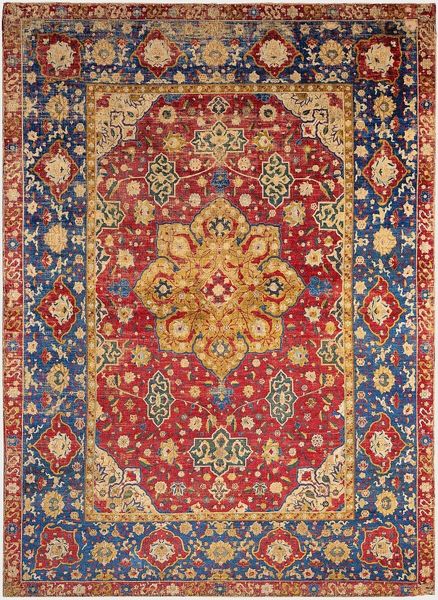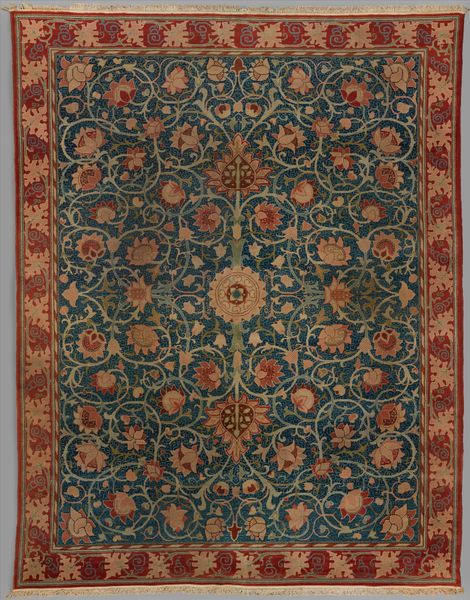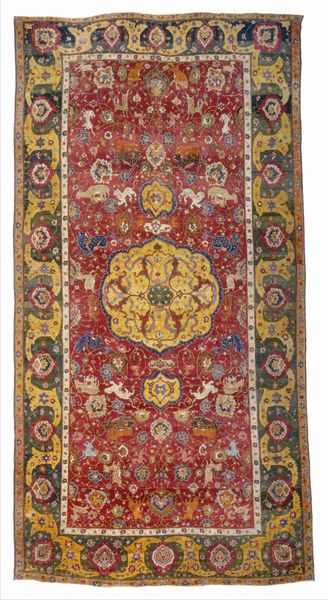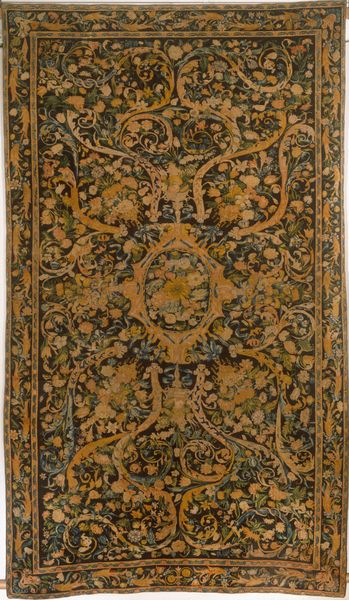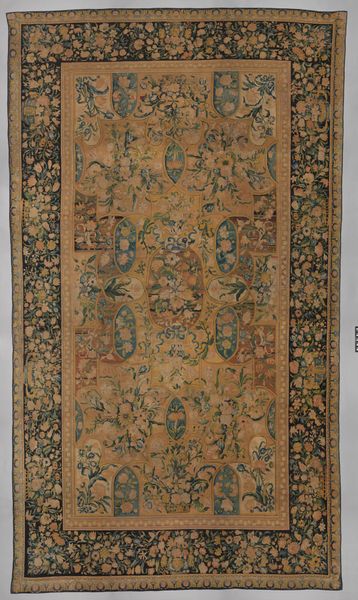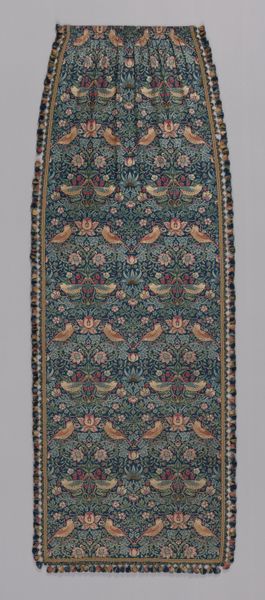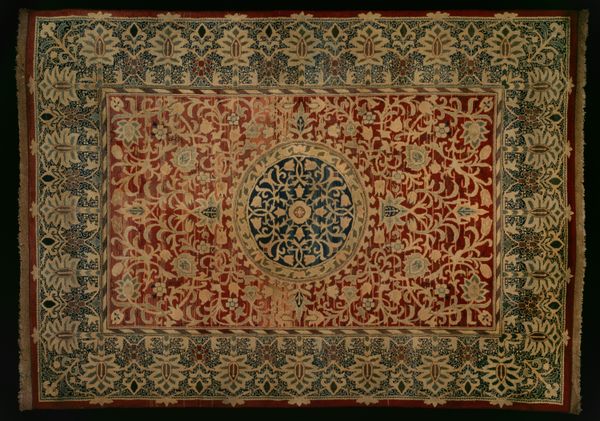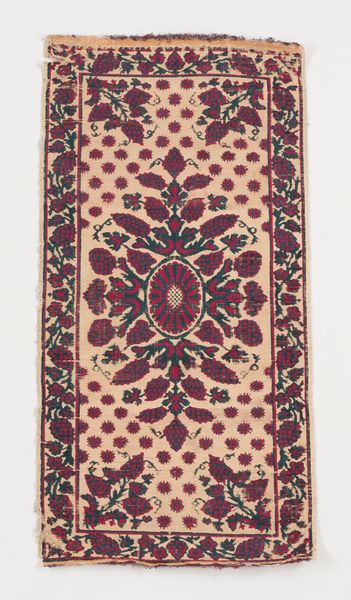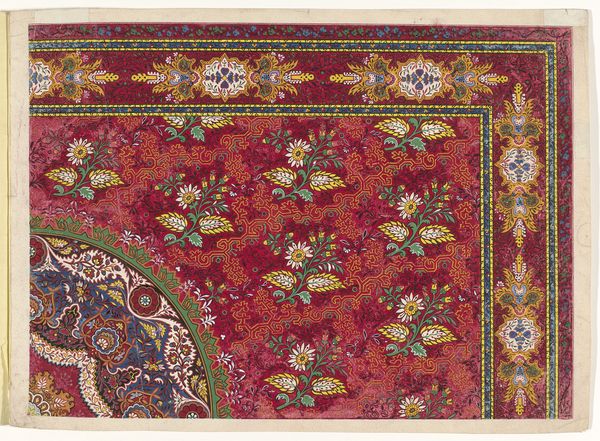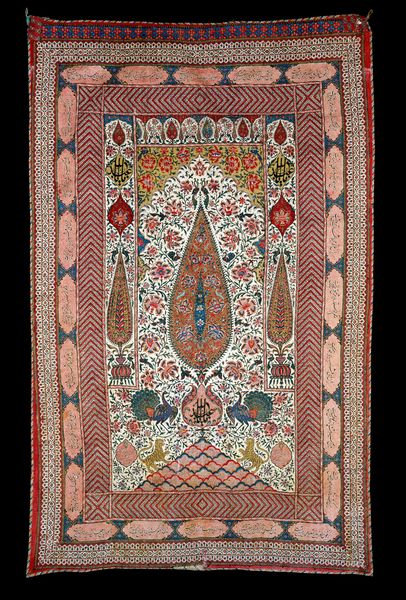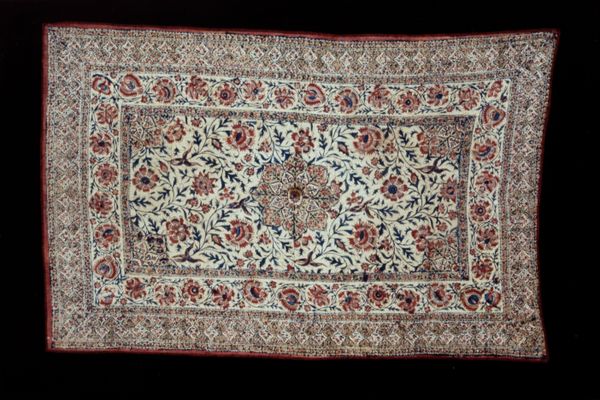
weaving, textile
#
baroque
#
weaving
#
textile
#
geometric pattern
#
decorative-art
Dimensions: Overall (confirmed): H. 146 1/16 x W. 100 in. (371 x 254 cm)
Copyright: Public Domain
Curator: Here we have a magnificent example of 17th-century weaving, a carpet crafted by the Savonnerie Manufactory between 1630 and 1665. You can find it here at the Metropolitan Museum of Art. Editor: Wow, it’s incredibly dense, isn't it? All those layers of flowers against that dark background create this opulent, almost dizzying effect. Curator: It's definitely a baroque aesthetic statement. The carpet exemplifies the era's emphasis on ornamentation and grandeur, which needs to be read in contrast to contemporary conditions for labourers involved in its creation. Textile production often rested on the exploitation of disenfranchised groups. Editor: Thinking about the labor that went into this makes me appreciate it even more. Look at the texture, how they built up those floral patterns—the process of choosing and combining all of those materials must have been incredibly intensive and highly specialized. I imagine craftspeople labored long hours on each square inch. Curator: Absolutely. We need to consider the conditions in which such objects are made and their connection to power dynamics of that era, the patronage systems. How did it function in relation to court culture, in relation to colonialist structures, gender, and so on. Editor: True. And those structures probably determined access to materials as well. To obtain that intense color, those vibrant threads, would have been resource-intensive. Were they relying on plant-based dyes, insect-derived pigments, imported commodities? The social implications ripple outwards from the materials themselves. Curator: Yes, by understanding production processes, it's also crucial to address how identity is interwoven into this piece. This was designed within a specific European aristocratic environment; who was this intended to appeal to, and how were the artisans constrained by, or subverting, expectations? Editor: Right. And beyond just intention, what was the function? What was the original placement, and what impact did that have? Understanding how it circulated among owners or displayed gives so much depth to our appreciation. Curator: I'm struck anew by how engaging with the social lives of art brings complexity, to even the most visually stunning of artefacts, urging critical inquiry. Editor: Likewise, for me, thinking about labor and process amplifies what I perceive and makes even decorative artwork feel less like surface and more like a profound cultural document.
Comments
No comments
Be the first to comment and join the conversation on the ultimate creative platform.
